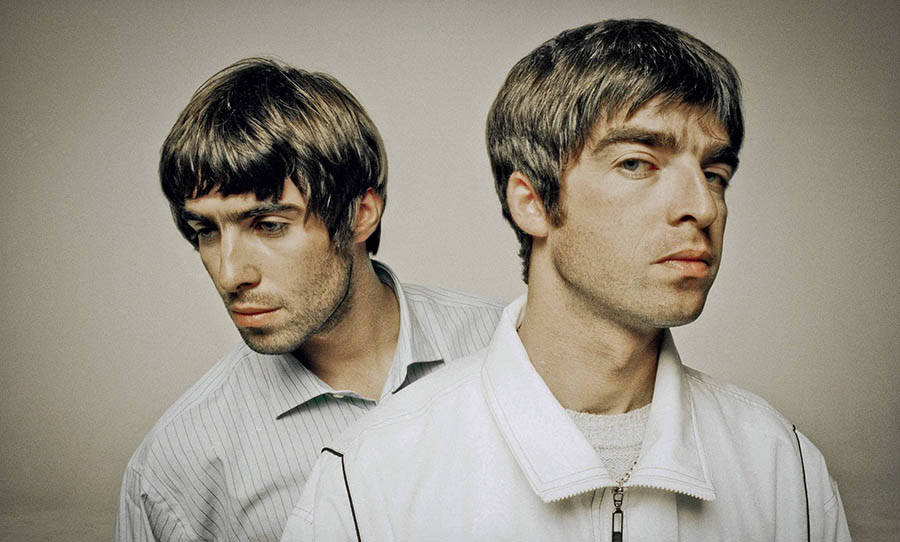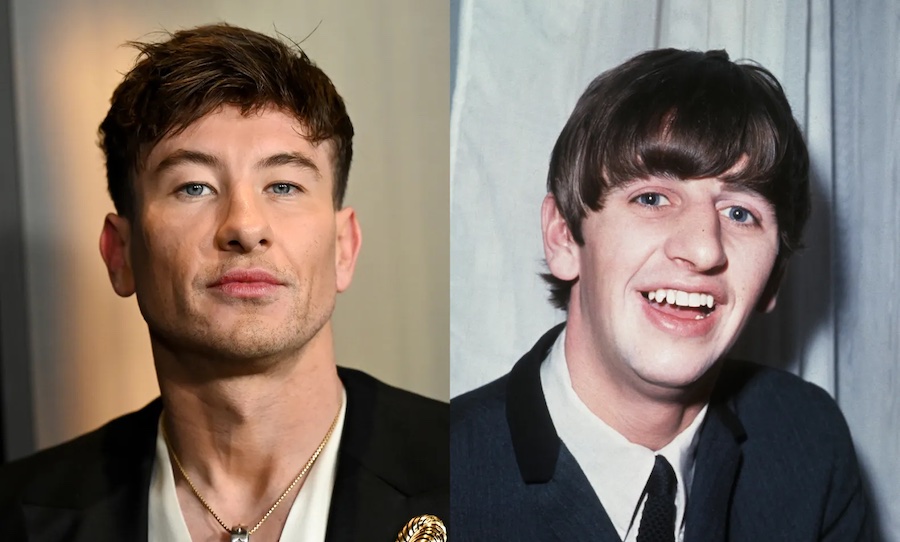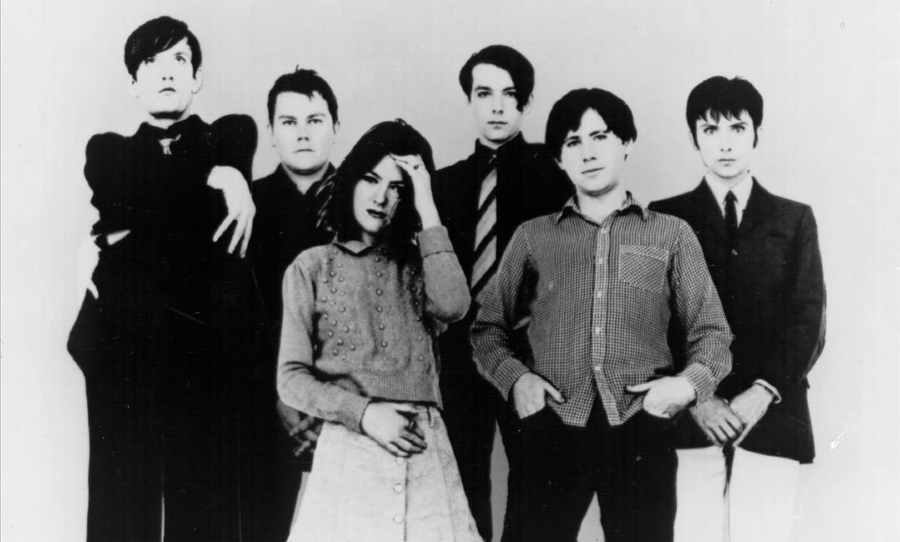In 1995, Oasis produced an album so universal, so concise, so monolithic, that rarely has a band touched so many people while riding so high. This is why What’s The Story (Morning Glory) mattered.
Noel Gallagher of Oasis once said, “What, you ask me if I’m happy? Listen: I’ve got eighty seven million pounds in the bank. I’ve got a Rolls Royce. I’ve got three stalkers. I’m about to go on the board at Manchester City. I’m part of the greatest band in the world. Am I happy with that? No, I’m not! I want more!”
Following his band’s debut album Definitely Maybe, it seemed nearly impossible for the band to go any higher. They had just released the fastest selling debut in British music history, they were viewed as the greatest British rock group around, they had money flowing in – most bands could only dream of reaching this peak in their entire career. However, Oasis weren’t most bands.
This is a band that always did everything to the extremes. Excess was their middle name. Definitely Maybe had it all; the singles, the classic tracks that blew the doors open for loud guitar rock to re-enter the mainstream of British culture. Just running through that debut’s track list – Supersonic, Live Forever, Cigarettes and Alcohol, Slide Away – it’s easy to understand why Oasis were such a big deal. Their leader and songwriter Noel Gallagher was never going to let this phase him, though.
The only way to best all of this was to create an album that was so much bigger, so much more anthemic, that the only trajectory afterwards was to crash and explode amongst a flaming heap of tabloids, politics, internal rivalries, and a stupid, stupid amount of drugs. Luckily, the band’s sophomore album What’s the Story (Morning Glory) to this day remains not just a near flawless classic rock record, but also a cultural signpost of an era where guitar bands could literally change the world.
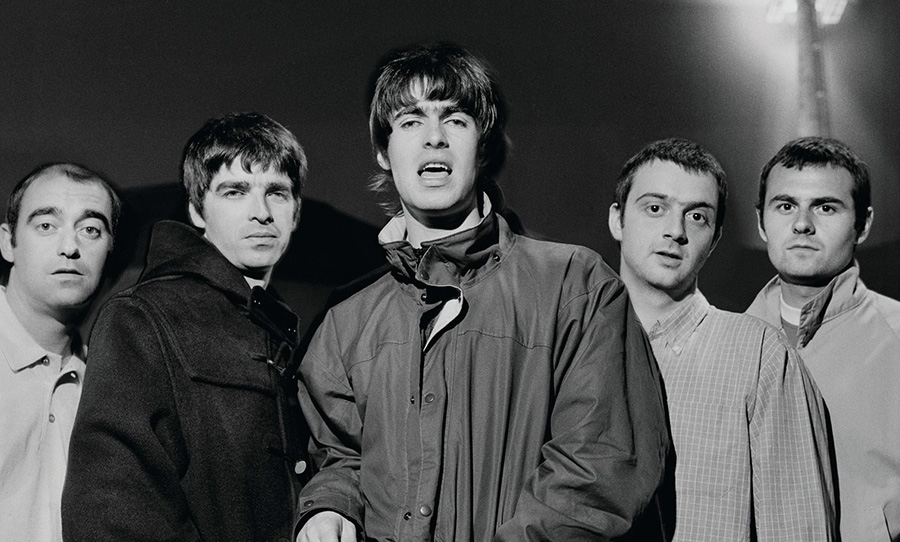
Many people outside of the UK only know Oasis through one song (which will be discussed later on), however, if you were in Britain during the ’90s, Oasis were as widely known as the Queen or Diana. This band was everywhere. It seemed they could do no wrong. But the most intriguing thing about Oasis was that they seemed to come out of literally nowhere.
Other bands of the era such as Blur and Suede had been fashioning their own form of British rock that took cues from the likes of The Smiths, The Stone Roses, and Bowie for a number of years prior. Pulp had been battling to achieve success since the early ’80s. The kings of British rock were collapsing at the turn of the new decade with The Stone Roses headbutting their record label, leading to a drawn-out process that would eventually see their underwhelming sophomore album The Second Coming released at the beginning of a new musical era.
Shoegaze had already collapsed, with bands such as My Bloody Valentine and Slowdive both turning inwards musically, lyrically, and literally, pushing them even further away from mainstream appeal. With all of this happening around them, a small group called Rain were beginning to form in Manchester.
Liam Gallagher, Paul ‘Bonehead’ McGuigan, Paul Arthurs, and Tony McCarroll played simple music that wasn’t spectacular or particularly inspiring. In support of his younger brother’s first gig, Noel decided to tag along and see how the band performed. Less than amazed by the group’s performance, Noel came up with a plan. He would ask his brother and his friends if he could join the band – as long as he could write the songs in order to reach for commercial success. Having recently changed their name to Oasis, the original lineup were all there.
From the get go, the addition of Noel had expanded the band’s possibilities. “He had loads of stuff written. When he walked in, we were a band making a racket with four tunes. All of a sudden, there were loads of ideas”, Bonehead later explained in an interview with John Harris.
The main goal of this band wasn’t to write the most technical or complex of tunes. There weren’t meant to be incredible guitar solos or spectacular chord changes. The point of Oasis was brute force. Much like a thunderstorm, Oasis were meant to appear and blow away anything that got in their way. They were meant to be electric. They were meant to be loud. They were meant to be the single greatest and most universal band on the planet. And for a moment there, they were.
The story of how Oasis reached such levels of success is the fantasy all musicians dream of. In 1993 while supporting a small band called Sister Lovers in Glasgow, Alan McGee, head of Creation Records, just so happened to be at the bar to watch one of his own label’s bands. Directly after the show, he asked the band to sign a recording contract. This would lead to a few months of negotiations before the band were also signed to a worldwide contract with Sony.
One year and numerous recording sessions later, the band had released what is now considered one of the greatest British albums of all time, Definitely Maybe. Their singles were permanent fixtures on the charts and they were selling thousands of records weekly. No other band until perhaps the Arctic Monkeys enjoyed such an astonishing and meteoric rise.
But this was almost too much, too soon. In what seems all too common with British bands, Oasis suffered an ill-fated American tour which lead to a large increase in drug consumption, falling outs, and Noel quitting the band entirely. After disappearing for a number of days, he was eventually convinced to come and rejoin the party and finish the tour. Following a near continual year of performing, Oasis decided to recuperate and put together a collection of songs that were bigger, louder, and better than anything they had done previously.
Right now, it’s important to mention an integral part of this story: the elephant (or Gorilla… bad joke) in the room. The old tale of two armies. The Battle of the Britpop. Oasis versus Blur.
Quite simply, it was tabloid fodder was created to pit two groups of British music lovers against each other. The meat and potato anthems of Oasis against the intellectual and bouncy social dissection of Blur. Two incredibly different bands who somehow managed to become attached at the hip. Here’s the rundown.
Blur were gearing to release the follow-up to their magnificent breakthrough Parklife. The Great Escape was going to be the band’s crowning glory, the final record in their Life trilogy. The only spanner in the works was Oasis. Both bands had decided to release their newest single on exactly the same day. Blur with Country House and Oasis with Roll With It – not the strongest songs by either band, let alone the strongest songs on their respective albums. However the tabloids and papers loved this news, pitting the two bands against each other in order to see who would come out on top; the Manchester working class rockers or the London Art School students.
Blur won, selling 274,000 copies in comparison to Roll with It’s 216,000. Huge numbers for any band, but what Blur had failed to understand was the longevity of a universal message. The Great Escape was a concept album at a time where nobody particularly cared for such a thing. The album sold very well and was reasonably received by critics, but Oasis had other plans.
Noel and the rest of his band had spent 15 days (a stupendously short amount of time to record an album) crafting and perfecting a record that was so loud, so big, so universal, that no record before or since has been so tailor-made for football stadiums and mass singalongs.
The beauty of What’s the Story (Morning Glory) is exactly the reason why critics were so ambivalent towards the album when it originally came out. In their original review for the album, Q magazine explained that the songs, “scan; they fill a hole; end of story. They say nothing much about anything.” Most reviews focused on the lack of progression from the band’s more punky, aggressive debut. With big hooks and simple classical song structures, the album’s unoriginality was also a source of focus. “They sound knackered”, said one review by the late and great Melody Maker.
One thing the critics sorely missed was the album’s universal appeal. Yes the songwriting was straightforward, and yes the lyrics were silly most of the time, but the melodies and the music hit a chord amongst people across the world. The album sold 350,000 copies in its first week in the UK, the most by any British act in history up until that point. It would go on to remain in the top 10 for more than a year and would begin to sell upwards of 200,000 copies per week in the US as well. The tour for the album would lead to sold out shows in stadiums, eventually ending with two nights at Knebworth in front of 250,000 people (nearly five percent of the UK’s population signed up for tickets). Oasis were quite literally the biggest band on the planet.
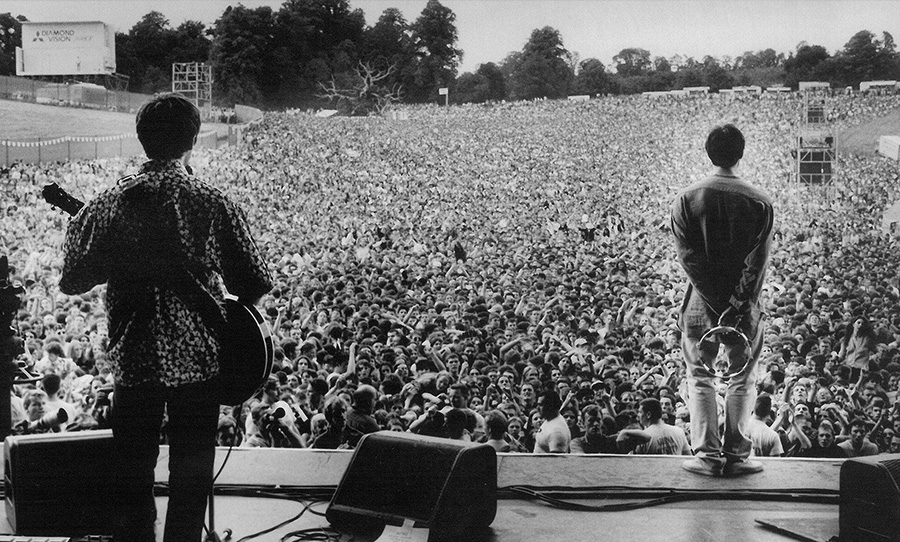
The album itself is full of huge choruses, massive singles, strange yet intriguing interim tracks, and utter appeal. Six of the ten tracks were released as singles. The first two, Some Might Say and Roll With It, are pure rock and roll stomps. They pummel and demolish as they plow through a field of perfect melodies. Hello and Morning Glory work in much the same view but with a slightly darker, more hard rock edge that was designed for the pogo of stadium crowds.
Hey Now may be the most underrated track in the entirety of the band’s catalogue. Much in the same vein as Definitely Maybe’s Shakermaker, the album plods and manoeuvres through verse-chorus structures until they dissolve in front of your eyes and you ride the flow. The momentum continues and you just let go of everything around you, following the song’s beautiful stop-start method. Cast No Shadow is a stunning ode to Verve lead singer Richard Ashcroft, one of the few times Oasis let their guard down to deify a person other than themselves. She’s Electric is a little silly, with arguably the most ridiculous lyrics on the album, but the melody is so crystal clean and sun drenched that you can’t help but adore the nostalgic nature of the song.
Outside of the UK, the album is most remembered for two monolithic singles. Don’t Look Back In Anger, Noel’s first single on lead vocals, is a song designed for mass sing alongs. As the verse churns and morphs, we prepare for the explosion of “Sooooooooo Sally can wait” during the chorus. Consistently ranked amongst the greatest number one singles in UK history, the song has remained in the top echelons since day dot.
Time has not diminished this song’s beauty and power, and no less than a few weeks ago I blasted this song with a few friends at a small birthday dinner. It remains timeless, and it will forever bring people together by reminding us to always appreciate what has happened and what there is to come.
The other song in question has a slightly more complicated history. Much like John Lennon’s Imagine or R.E.M.’s Everybody Hurts, this song has become a cliche in and of itself. A fireside ballad of magnificent proportions that’s so universally known, most people would rather never hear it again.
Anyway, here’s Wonderwall.
To make a case for Wonderwall, the song’s beautiful production and layered string arrangement are extraordinary. Alan White’s drumming is miraculous, it swerves and skims across the track, creating a soft, marching band rhythm that doesn’t throw us full throttle into the song, but rather lulls us through the elements. The song never truly explodes, it kind of druggily moves around itself until it ends. Liam’s vocals aren’t forced, there’s no huge guitar solo. In a similar manner to The Beatles’ Strawberry Fields, the track simply morphs until it needs to end.
The beauty of Wonderwall is that it’s so simple. It has become pretentious, even though not a single element is. What most people take aim at is the song’s universality; everyone knows this song , and this makes it uncool to love this song. I make the argument that this is one of the most perfect, strange, and odd songs to reach such a lofty height of world renown. Wonderwall encapsulates this album’s central guiding feature, and that is universality. Everyone understands this music, anyone can recognise it, and for this reason What’s the Story (Morning Glory) is timeless.
The final track, Champagne Supernova, sits amongst a small collection of songs which can only be defined as epic. This is a song that sits beyond our comprehension of perfection. It’s a ride of emotional purification that needs to be unleashed within all of us. You have to shout out every syllable, you have to take that ride as it comes, building in momentum before the perfect climax.
This record, to be blunt, is huge. It has the hit songs, it’s the album that turned Oasis into national megastars. It has everything you want from a stadium-sized record. The songs are masterclasses in melody, with the temperance of a live band feel that helped solidify the record’s position amongst the people. That’s the beauty of this album, it was made for people, by people trying to escape the clutches of banality and boredom.
The lyrics are gibberish more often than not, but that doesn’t particularly matter. Noel was once asked what the lyrics to Champagne Supernova meant. He simply answered, “I don’t know. But are you telling me, when you’ve got 60,000 people singing it, they don’t know what it means? It means something different to every one of them.” The energy that subsumes the listener as they move from the brutish “Hello” to the soul encompassing “Champagne Supernova” is truly astonishing.
Having listened to these songs from a very young age, played in my household, blasted in the car, sung along at birthdays, dinners, parties galore, they eventually became a part of my psyche. Oasis remain one of my all time favourite bands because they hit every single musical bone within me. You’re less focused on the technical skill or the literal sense of the song and more focused on the mood – the feel of the rollercoaster ride. The songs on Morning Glory speak to a melodic soul within us which needs to be fed. What’s the Story (Morning Glory) is one of a small selection of albums I can always put on and love the entire tracklist back to front, no matter what mood I am in. These are songs that define what great music should be.
The following years would not be kind to Oasis. They would continue selling millions, but as their career continued in an upwards trajectory, so would their hedonistic lifestyles and their egos. Five so-so to just alright albums later (Be Here Now is still criminally underrated, but that’s for another time), one cataclysmic break up, and a decade-long verbal feud between the two brothers hasn’t helped shine a positive light on those formative years where Oasis were gods amongst us. They could do no wrong. It’s that reason why they failed to get back to what made them special. They were human after all, but they had forgotten exactly what made them human in the first place.
All of this makes What’s the Story (Morning Glory) even more heartbreaking. At the centre of it all, we need music as means to connect us, in order to make us feel more human. The great writer Kurt Vonnegut once said, “Music is, to me, proof of the existence of God.” Oasis made two albums, up there with some of the greatest rock records ever produced, that touched millions. However when you are up so high, you forget about everything else.
The album ends on this note; as Champagne Supernova explodes open into a most rapturous extravaganza, we begin to forget about pain, sadness, and the lows. Oasis helped us do that, they took us out of those worlds. But as that explosion slowly implodes back on itself, and the comedown begins, the only thing Liam Gallagher can ask is, “Where were you while we were getting high?”
Slowly, reality chases up on us. But for that split second, one small moment, we have escaped. All these years later, that’s still what make’s What’s the Story (Morning Glory) so special.
